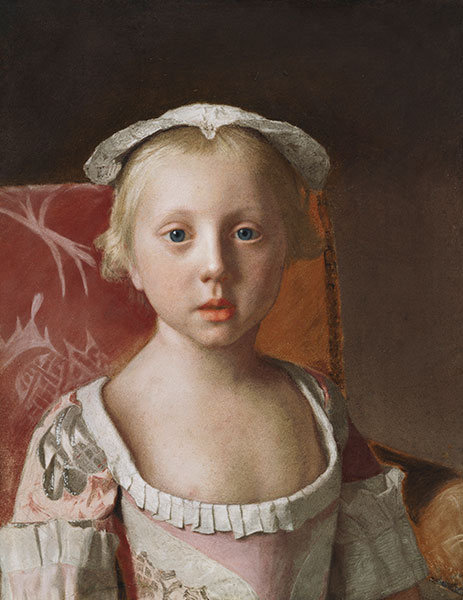See which 18th-century portraitist is being comprehensively celebrated at Scotland’s National Gallery.
Visitors to Scotland’s National Gallery will have their chance to take in the masterful portraits and self-portraits of 18th-century painter Jean-Etienne Liotard (1702–1789). Working in pastel, charcoal, oil, and enamel, Liotard was a heavily employed portraitist in an age of opulence and magnificence. His portraits, however, such as the hypnotic “Princess Louisa Anne” of 1754, have an informal truthfulness that is absolutely gripping. The young girl, aged 5 or 6, has piercing blue eyes, golden blond hair, and a flushness of skin that reads like a photograph rather than a pastel on vellum.
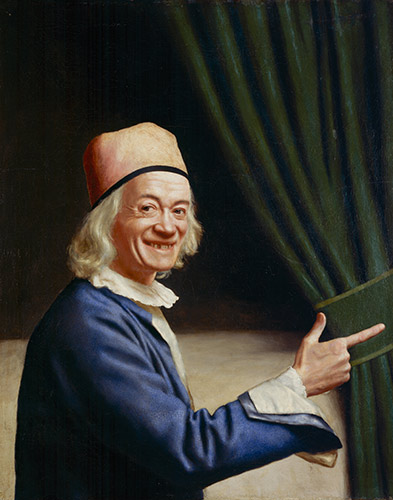
Jean-Etienne Liotard, “Liotard Laughing (Self-Portrait),” ca. 1770, oil on canvas, 84 x 74 cm. (c)
Musée d’art et d’histoire, Ville de Genève.
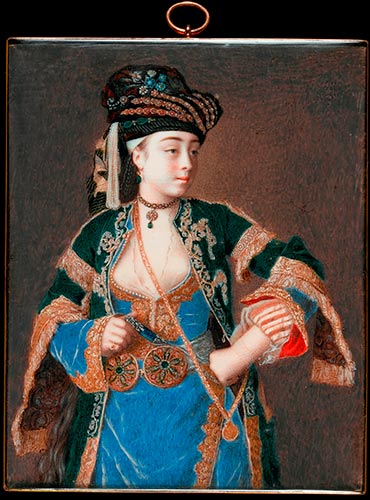
Jean-Etienne Liotard, “Laura Tarsi, ‘a Grecian Lady’,” ca. 1745-1749, watercolor on ivory, 96 x 77 mm. (c)
Fitzwilliam Museum, Cambridge.
Liotard is rarely exhibited or appreciated in Britain, and the exhibition, titled “Jean-Etienne Liotard,” surveys his international prowess, famous portraits, startling self-portraits, and experimentations with still life subjects. Liotard’s “Self-Portrait Laughing” of 1770 shows the sophisticated and witty side of the man. In three-quarter view, we see Liotard gazing out at the viewer with an engaging smile. Perhaps he knows something we do not, as he curiously points and directs our attention outside the picture frame.
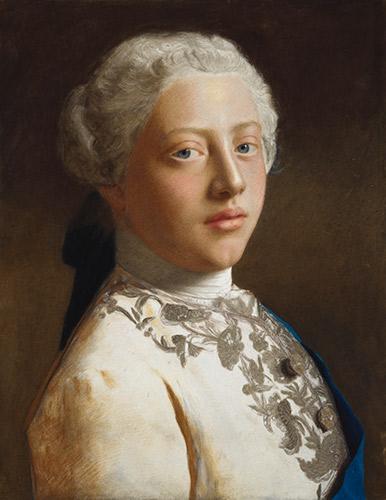
Jean-Etienne Liotard, “George, Prince of Wales,” 1754, pastel on vellum, 40.6 x 29.8 cm. Royal Collection Trust (c)
Her Majesty Queen Elizabeth II 2015.
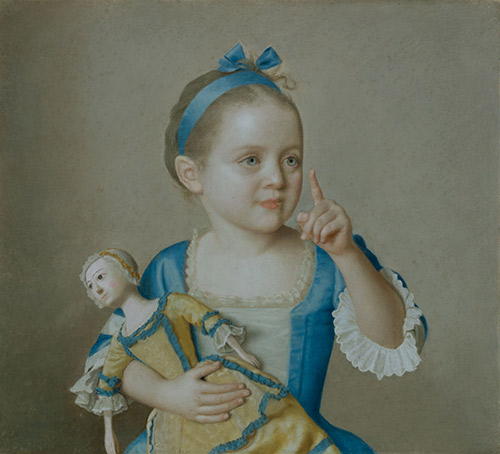
Jean-Etienne Liotard, “Marie-Anne Françoise Liotard with a Doll,” ca.1744, Pastel on parchment, 45 x 50 cm. (c)
Vienna Shonbrunn Palace.
Liotard’s clientele included the bourgeoisie of Geneva and aristocrats, actors, Grand Tourists, and men and women of fashion. Liotard’s obsessive interest in the details of clothing surfaces in “Laura Tarsi, ‘A Grecian Lady’” circa 1745–1749. The portrait displays a well-to-do woman adorned in extravagant clothing. Liotard has meticulously rendered nearly every fold, stitch, and bit of lace embroidery on the woman’s costume. Vibrant greens and blues add vitality to the image and capture the viewer’s attention.
“Jean-Etienne Liotard” opened on July 4 at the Scottish National Gallery and will be on view through September 13.
To learn more, visit Scottish National Gallery.
This article was featured in Fine Art Today, a weekly e-newsletter from Fine Art Connoisseur magazine. To start receiving Fine Art Today for free, click here.

